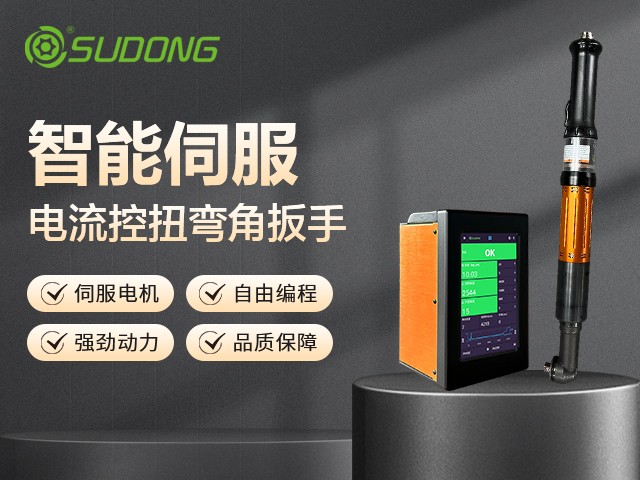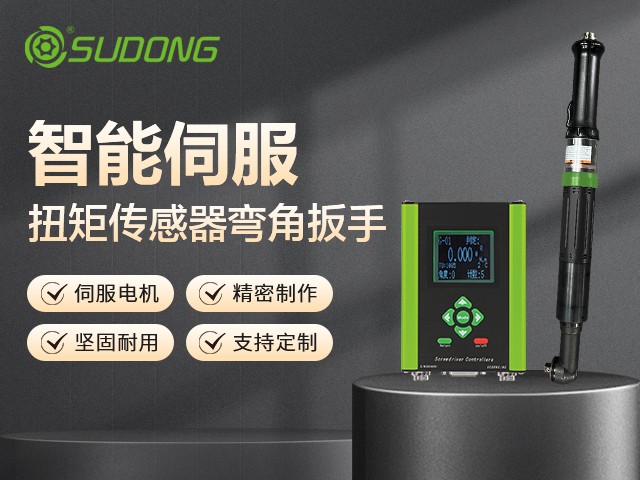What’s the difference between a servo tightening machine and a standard tightening machine? As a key piece of equipment in industrial automated assembly, tightening machines’ technological evolution directly reflects the manufacturing industry’s pursuit of precision and efficiency. This article will delve into the differences in the operating principles of servo tightening machines and standard tightening machines, compare their performance characteristics, and explore their respective application scenarios.

1. Servo tightening machine: a precision revolution in closed-loop control
1. Working Principle
The servo tightening machine uses a servo motor as its core power unit and achieves precise control of angle and torque by receiving pulse signals. Its closed-loop control system consists of three parts:
- Torque sensor: monitors the output torque in real time and feeds the signal back to the controller.
- Servo drive: adjusts motor current based on feedback and dynamically compensates for errors.
- Controller: Built-in PID algorithm ensures torque accuracy within ±2% and supports multi-axis coordinated control.
2. Technological advantages
- High-precision control: Using pulse positioning technology, the resolution reaches 0.001mm, supporting multi-parameter control such as torque, angle, and yield value.
- Multi-axis collaboration: A single system supports 36-axis synchronous operation, adapting to complex assembly processes.
- Data traceability: Records parameters such as torque, angle, time, etc. during the tightening process to meet the quality traceability requirements of Industry 4.0.
2. Ordinary tightening machine: open loop system efficiency first
1. Working Principle:
Conventional tightening machines (such as pneumatic tightening machines) rely on cylinders or conventional motors, with maximum torque limited by mechanical structure. Their control logic is an open-loop system, lacking real-time feedback mechanisms, and their accuracy is significantly affected by fluctuations in air pressure and voltage.
2. Performance characteristics
- Cost advantage: simple structure, low maintenance cost, suitable for budget-sensitive scenarios.
- Accuracy limitations: Torque errors typically exceed ±5%, which cannot meet high-precision assembly requirements.
- Single function: only supports fixed torque output and lacks multi-parameter adjustment capability.
3. Core Difference Comparison
| Comparison Dimension | Servo tightening machine | Ordinary tightening machine |
|---|---|---|
| Control accuracy | ±2% | ±5% or more |
| Feedback mechanism | Closed-loop control (sensor + algorithm) | Open-loop control (no feedback) |
| Multi-axis collaboration | Support 36-axis synchronization | Single-axis independent operation |
| Data Recording | The entire process is traceable | No data logging function |
| Applicable Scenarios | Automobile engines, aerospace, electronic assembly | Furniture manufacturing, general industrial assembly |
4. Application Scenario Analysis
1. Servo tightening machine
- Automobile manufacturing: Engine cylinder head screws require constant torque (25-35N·m), and the servo system ensures no quality fluctuations after millions of assemblies.
- Aerospace: Satellite bracket installation requires torque accuracy of ±1%, and closed-loop control to avoid structural damage.
- Electronic assembly: Miniature screws (M1.2) require torque control of 0.05-0.1 N·m to prevent damage to circuit boards.
2. Ordinary tightening machine
- Furniture production: The screw hole spacing of panel furniture is large, and the precision requirements are not high, so pneumatic tools have priority in efficiency.
- Building installation: Tightening steel structure bolts requires high torque (>1000N·m) and relies on hydraulic or pneumatic tools.
5. Selection Recommendations
- Prefer servo tightening machine:
- High-precision scenarios that require quality certifications such as ISO9001 and TS16949.
- The assembly process requires data traceability or compliance with 6 Sigma standards.
- Consider a common tightening machine:
- Simple assembly tasks with limited budget and low precision requirements.
- The operating environment has strong electromagnetic interference or requires extremely large torque (>5000N·m).

Conclusion
Servo tightening machines, through closed-loop control and multi-axis collaborative technology, have redefined the precision boundaries of tightening operations, becoming the preferred solution in high-end manufacturing sectors such as automotive, electronics, and aerospace. Conventional tightening machines, however, continue to maintain their place in budget-sensitive applications due to their cost advantages. With the advancement of industrial intelligence, technological advancements in servo tightening machines, such as AI-powered predictive maintenance and digital twin integration, will further solidify their core position in precision assembly.
